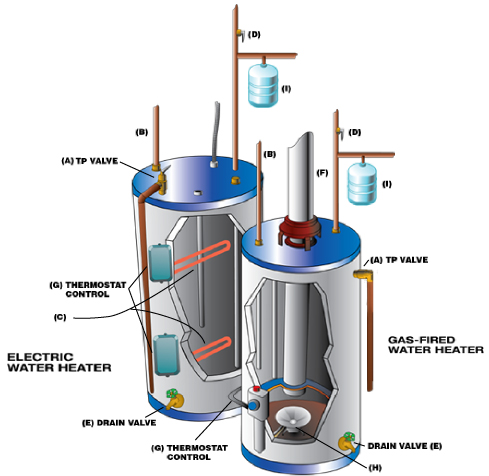Do It Yourself Hot Water Heater Installation: Necessary Actions for Success
When considering a DIY hot water heater setup, it is vital to approach the task with a methodical way of thinking, as the process entails numerous critical steps that can considerably impact both safety and security and performance. Selecting the appropriate water heating system for your details demands is simply the beginning; preparing the setup area and understanding the needed tools and materials are just as crucial. As we explore the systematic strategy to installation, it emerges that forgeting any kind of information might bring about difficulties down the line. Are you prepared to browse the details of this home improvement task?
Choosing the Right Water Heater
When picking a water heating system, it is important to consider several vital variables to make sure optimum efficiency and performance - water heater installation Brea. Firstly, evaluate the sort of water heating unit that best fits your demands. Alternatives include tankless, tank, and heatpump water heaters, each offering unique advantages in terms of power performance and space needs
A bigger family might need a device with a higher gallon ability or a tankless system that can supply constant hot water. Each energy type has ramifications for setup expenses and long-lasting energy expenditures.
Energy effectiveness is another essential aspect. Search for devices with a high Energy Variable (EF) ranking, as these models take in less power and can dramatically reduce energy bills. In addition, check for service warranties and brand reliability, as these can indicate the longevity and upkeep demands of the device. By very carefully evaluating these aspects, you can pick a hot water heater that lines up with your household's specific needs, ensuring convenience and performance for years ahead.
Tools and Products Needed
Efficiently installing a hot water heater calls for not only the best option of unit however also the ideal tools and materials. Prior to getting started on your do it yourself project, ensure you have a detailed listing of things to promote a smooth installation procedure.
Essential tools consist of a pipeline wrench, adjustable pliers, and a screwdriver collection (both flathead and Phillips), which will certainly help you take care of numerous fittings and connections. Furthermore, a drill with appropriate little bits is required for mounting brackets or making any type of required holes. For security, a voltage tester is important, especially when managing electric hot water heater.
You will certainly also need a flexible water supply line, which can be either knotted stainless steel or PVC, depending on your preferences and regional codes. By collecting these tools and materials in advance, you set the stage for an effective water heater installation.
Preparing for Setup
Prior to beginning the setup of your hot water heater, it is critical to analyze the installation site to ensure it satisfies all essential requirements. Begin by confirming that the location is well-ventilated, particularly for gas hot water heater, to stop the buildup of harmful gases. Look for the accessibility of needed connections, consisting of water system lines and electric outlets, guaranteeing they remain in great condition and correctly located.

This aggressive technique not just makes certain compliance with regional structure codes however likewise improves the long life and efficiency of the water heating unit. Appropriate preparation establishes the phase for a smooth installation process and aids avoid unexpected problems.
Step-by-Step Setup Process
With the preparation full and all needed analyses carried out, the next phase involves the step-by-step installment of your water heating system. For tank-type water heating units, connect the cool water supply line to the inlet, normally marked in blue, and the find here hot water line to the electrical outlet, normally designated in red.
Next, protect the temperature and stress alleviation valve, which is vital for safety and security. Affix the discharge pipeline to this valve, routing it towards the floor or an ideal drainage location. For electric versions, link the power supply by removing the cords and protecting them to the heater's terminals according to the supplier's instructions.
If you are installing a gas water heating system, make sure the gas line is attached correctly and look for leakages utilizing a soap remedy. Connections are made, fill up the container with water before transforming on the power or gas supply. Finally, permit the water heating system to reach the preferred temperature level and check for any type of leakages around all connections.
Ensuring Safety and Efficiency
Routinely making certain security and performance during the installation and operation of your water heating system is important for optimal performance and durability. Begin by choosing an ideal area that abides with local building regulations and provides sufficient ventilation. Make sure that the area is devoid of flammable materials and has sufficient space for maintenance and assessments.

After installation, conduct routine look at the system to discover leaks, rust, or unusual sounds. Establish the thermostat to a safe temperature level, usually around 120 ° F, to avoid scalding and improve power performance. Shield pipelines to decrease warm loss, which adds to lower power costs.
Final Thought
Finally, successful DIY hot water heater installation pivots on cautious planning and implementation. Selecting the appropriate water heating system, preparing the installment location, and following a systematic installation process are crucial actions. Complying with safety standards throughout the installment guarantees wikipedia reference both security and efficiency. In addition, routine maintenance checks post-installation will add to the optimal efficiency of the water heating unit, ultimately boosting the durability and performance of the system. Effectively establishing the thermostat additionally makes sure safe operation.
When thinking about a Do it yourself water heating unit setup, it is necessary to come close to the task with a methodical frame of mind, as the procedure includes a number of essential steps that can dramatically impact both security and performance.Prior to beginning the installation of your water heating system, it is essential to examine the installment site to guarantee it meets all needed needs. For tank-type water heaters, link the chilly water supply line to the inlet, typically i loved this noted in blue, and the hot water line to the outlet, typically designated in red.Routinely making certain safety and effectiveness throughout the installation and operation of your water heater is critical for ideal performance and longevity. Picking the ideal water heater, preparing the installation area, and complying with a methodical setup procedure are vital actions.
 Tia Carrere Then & Now!
Tia Carrere Then & Now! Val Kilmer Then & Now!
Val Kilmer Then & Now! Shane West Then & Now!
Shane West Then & Now! Justine Bateman Then & Now!
Justine Bateman Then & Now! Kerri Strug Then & Now!
Kerri Strug Then & Now!